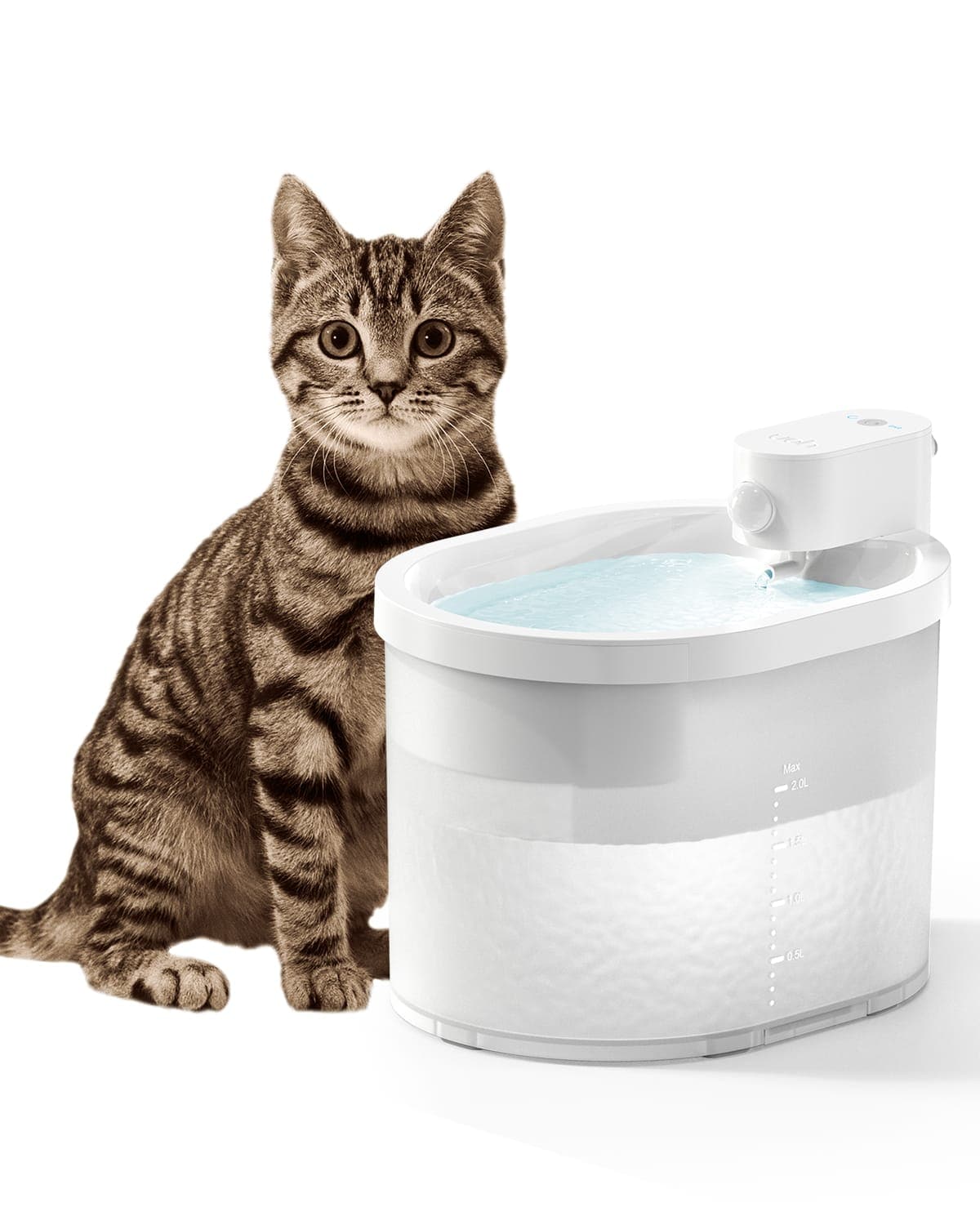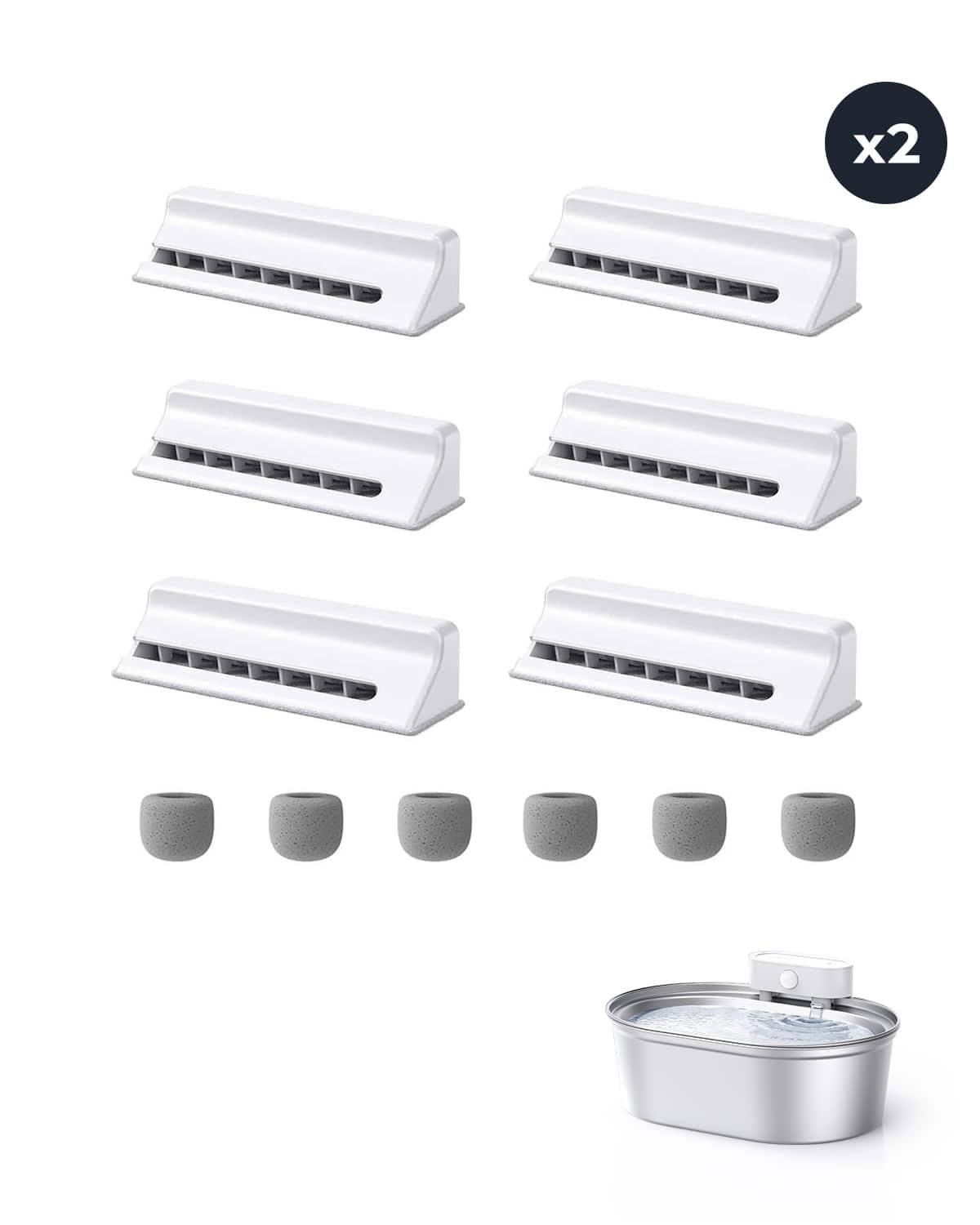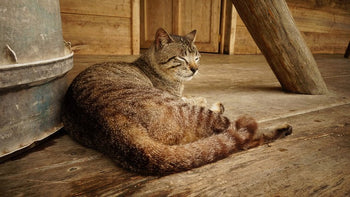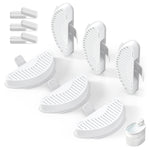As a pet owner, you cherish the companionship and joy your furry friend brings into your home. However, along with the love and laughter, pets can sometimes introduce unwanted odors that permeate your living space. This leads many to wonder: Will an air purifier help with pet odor? In this comprehensive guide, we'll explore how air purifiers can combat pet odors, the types of air purifiers best suited for this purpose, and additional strategies to keep your home smelling fresh.

Understanding Pet Odors
Before diving into solutions, it's essential to understand what causes pet odors. Common sources include:
- Dander and Hair: Pets shed skin cells and fur, which can harbor odors.
- Saliva and Urine: Accidents or drooling can leave lingering smells.
- Natural Oils: Animals produce oils that can have a distinct scent.
- Environmental Factors: Outdoor pets may bring in smells from the environment.
These odors can accumulate over time, making regular home maintenance crucial.
Will an Air Purifier Help with Pet Odor?
The short answer is yes, an air purifier can significantly reduce pet odors in your home. Here's how:
How Air Purifiers Work
Air purifiers are devices designed to remove contaminants from the air. They draw in air, filter out pollutants, and release clean air back into the room. The effectiveness of an air purifier in eliminating pet odors depends on the type of filtration system it uses.
Types of Air Purifier Filters
1. HEPA Filters (High-Efficiency Particulate Air)
- Function: Captures particles as small as 0.3 microns with 99.97% efficiency.
- Effectiveness: Excellent for removing pet dander and hair but limited in odor elimination since odors are caused by gaseous molecules smaller than what HEPA filters can trap.
2. Activated Carbon Filters
- Function: Uses porous carbon to adsorb volatile organic compounds (VOCs) and odors.
- Effectiveness: Highly effective at trapping odor-causing molecules, making them ideal for combating pet smells.
3. Combination Filters
- Function: Incorporate both HEPA and activated carbon filters.
- Effectiveness: Provide comprehensive air cleaning by removing both particles and odors.
4. UV-C Light Purifiers
- Function: Use ultraviolet light to kill bacteria and viruses.
- Effectiveness: Not particularly effective against odors but can reduce airborne pathogens.
5. Ionizers and Ozone Generators
- Function: Release ions or ozone to neutralize pollutants.
- Effectiveness: Can reduce odors but may produce ozone, which can be harmful in high concentrations.
Recommendation: For pet odors, air purifiers with activated carbon filters or combination filters (HEPA plus activated carbon) are the most effective.

Choosing the Right Air Purifier
When selecting an air purifier to combat pet odors, consider the following factors:
Compare the room size with the purifier’s coverage
Ensure that the air purifier’s recommended coverage area is equal to or larger than your room's area. If your room is 20 square meters and the purifier is rated for 25 square meters, then it is sufficient for the room.
Reference the CADR value
The CADR is typically measured in cubic meters per hour and indicates how much air the purifier can clean per hour. As a rule of thumb, the CADR should be about 2/3 of the room size. For example, in a 20-square-meter room, the ideal CADR should be at least 133 cubic meters per hour (20 square meters * 2/3 = 133).
Example:
If you have a 30-square-meter living room, you should select an air purifier with a recommended coverage area of at least 30 square meters and a CADR higher than 200 cubic meters per hour to effectively purify the air and maintain good air quality.
By following these steps, you can ensure that the air purifier you choose is appropriate for the room size and will provide optimal performance.
Noise Level
For areas like the living room, where noise sensitivity is lower, a noise level of 40 to 50 decibels is acceptable. However, if you're using the air purifier in a bedroom or quiet space, it's recommended to choose one with a noise level below 30 decibels. The Uah Pet Air Purifier operates silently at less than 28 decibels, making it ideal for quieter environments.
Maintenance
- Consider the cost and frequency of filter replacements.
- Some models have washable filters for cost savings.
Additional Features
- Air Quality Sensors: Adjust settings based on air quality.
- Energy Efficiency: Look for Energy Star-rated models.
- Warranty and Customer Support: For peace of mind.
Myths About Air Purifiers and Pet Odors
Myth 1: All Air Purifiers Eliminate Odors
Not all air purifiers are effective against odors. Those without activated carbon filters may not address odor molecules.
Myth 2: Air Purifiers Replace the Need for Cleaning
While helpful, air purifiers are not a substitute for regular cleaning and pet care.
Myth 3: Ozone Generators Are Safe for Homes
Ozone generators can produce harmful levels of ozone and are not recommended for occupied spaces.
Benefits of Using an Air Purifier for Pet Odors
- Improved Air Quality: Removes allergens like dander and hair, reducing allergy symptoms.
- Odor Reduction: Eliminates unpleasant smells, making your home more inviting.
- Healthier Environment: Reduces airborne bacteria and pollutants associated with pets.
- Peace of Mind: Allows you to enjoy your pet without worrying about lingering odors.
Additional Strategies to Combat Pet Odors
While air purifiers are effective, combining them with other methods enhances odor control.
Regular Cleaning
- Vacuum Frequently: Use a vacuum with a HEPA filter to remove hair and dander from floors and furniture.
- Wash Pet Bedding: Clean your pet's bedding weekly to eliminate odors.
- Clean Accidents Promptly: Use enzymatic cleaners to remove urine or vomit stains and smells.
Grooming Your Pet
Regular grooming minimizes the amount of hair and dander your pet sheds.
- Brushing: Daily brushing reduces loose fur and distributes natural oils.
- Bathing: Regular baths help remove dirt and odors from your pet's coat.
- Professional Grooming: Consider professional services for a thorough clean.
To make grooming easier and more effective, Uahpet offers a range of grooming tools designed to keep your pet clean and comfortable. High-quality brushes, combs, and grooming accessories help reduce shedding and odors at the source, complementing the use of an air purifier.
Proper Ventilation
- Open Windows: Allow fresh air to circulate when weather permits.
- Use Exhaust Fans: In areas like kitchens or bathrooms where odors can accumulate.
- Air Out Bedding and Rugs: Regularly take them outside to freshen up.
Use Odor-Neutralizing Products
- Enzyme Cleaners: Break down odor-causing molecules.
- Pet-Safe Deodorizers: Sprays and candles designed to neutralize odors without harming pets.
- Baking Soda: A natural deodorizer for carpets and fabrics.
Conclusion
Air purifiers can effectively help eliminate pet odors, especially those with activated carbon filters. For optimal results, it's best to pair an air purifier with regular cleaning and proper pet grooming. Uahpet not only offers grooming tools but also provides the Uah Pet Air Purifier for Dog and Cat Family, featuring a true H13 HEPA Pets Pro filter. Its electrostatic cotton filter captures more pet dander, reduces filter replacements, and offers a 99.9% UVC sterilization rate.
















